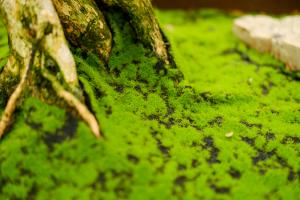Do Plants Prevent Water Runoff?
Water runoff is a major problem faced by many cities and towns, particularly during heavy rainfall or flood events. This is because many urban areas have large areas of impervious surfaces such as roads, driveways, and parking lots, which prevent water from soaking into the ground. As a result, the water flows over these surfaces, picking up pollutants and eroding soil and other materials in its path.
The Role of Plants in Preventing Water Runoff
Plants play a crucial role in preventing water runoff, particularly in natural or rural environments. This is because their roots penetrate deep into the soil, creating channels for water to infiltrate into the ground. Additionally, plants absorb water through their roots and release it back into the atmosphere through a process called transpiration. This helps to cool the local climate, regulate humidity, and prevent soil erosion.
However, in urban environments, the role of plants in preventing water runoff is often underappreciated. Green infrastructure such as street trees, green roofs, and rain gardens can help to reduce the amount of water that flows over impervious surfaces and into stormwater drains. These features also provide a host of other benefits, such as improved air quality, increased property values, and enhanced aesthetic appeal.
The Benefits of Green Infrastructure
Green infrastructure is an essential tool for managing water runoff, but its benefits extend far beyond that. For example, studies have shown that street trees can reduce temperatures by up to 10 degrees Fahrenheit in urban areas, resulting in energy savings and improved air quality. Green roofs can also help to reduce urban heat island effects, which can contribute to a host of health problems. Additionally, green infrastructure can help to improve public health by providing opportunities for physical activity and reducing stress.
Challenges and Solutions
Despite the many benefits of green infrastructure, there are still many challenges to implementing these strategies in urban areas. One of the biggest barriers is funding, as many municipalities may lack the resources to install and maintain these types of features. Additionally, there may be resistance from property owners who are concerned about the loss of parking or other amenities.
To address these challenges, some cities and towns have established incentive programs to encourage property owners to install green infrastructure. For example, New York City operates a Green Infrastructure Grant Program that provides funding for projects such as rain gardens, green roofs, and permeable pavement. Other cities have introduced zoning regulations that encourage the use of green infrastructure, or have established partnerships with local businesses and organizations to promote these strategies.
Conclusion
While plants alone may not be able to completely prevent water runoff in urban areas, they are a powerful tool in the fight against this problem. Through the use of green infrastructure, municipalities can reduce the amount of water that flows over impervious surfaces and into stormwater drains, while also reaping a host of other benefits. With the right policies and incentives in place, cities and towns can work towards a more sustainable future and a healthier environment for all.

 how many times do yo...
how many times do yo... how many planted tre...
how many planted tre... how many pine trees ...
how many pine trees ... how many pecan trees...
how many pecan trees... how many plants comp...
how many plants comp... how many plants can ...
how many plants can ... how many plants and ...
how many plants and ... how many pepper plan...
how many pepper plan...
































